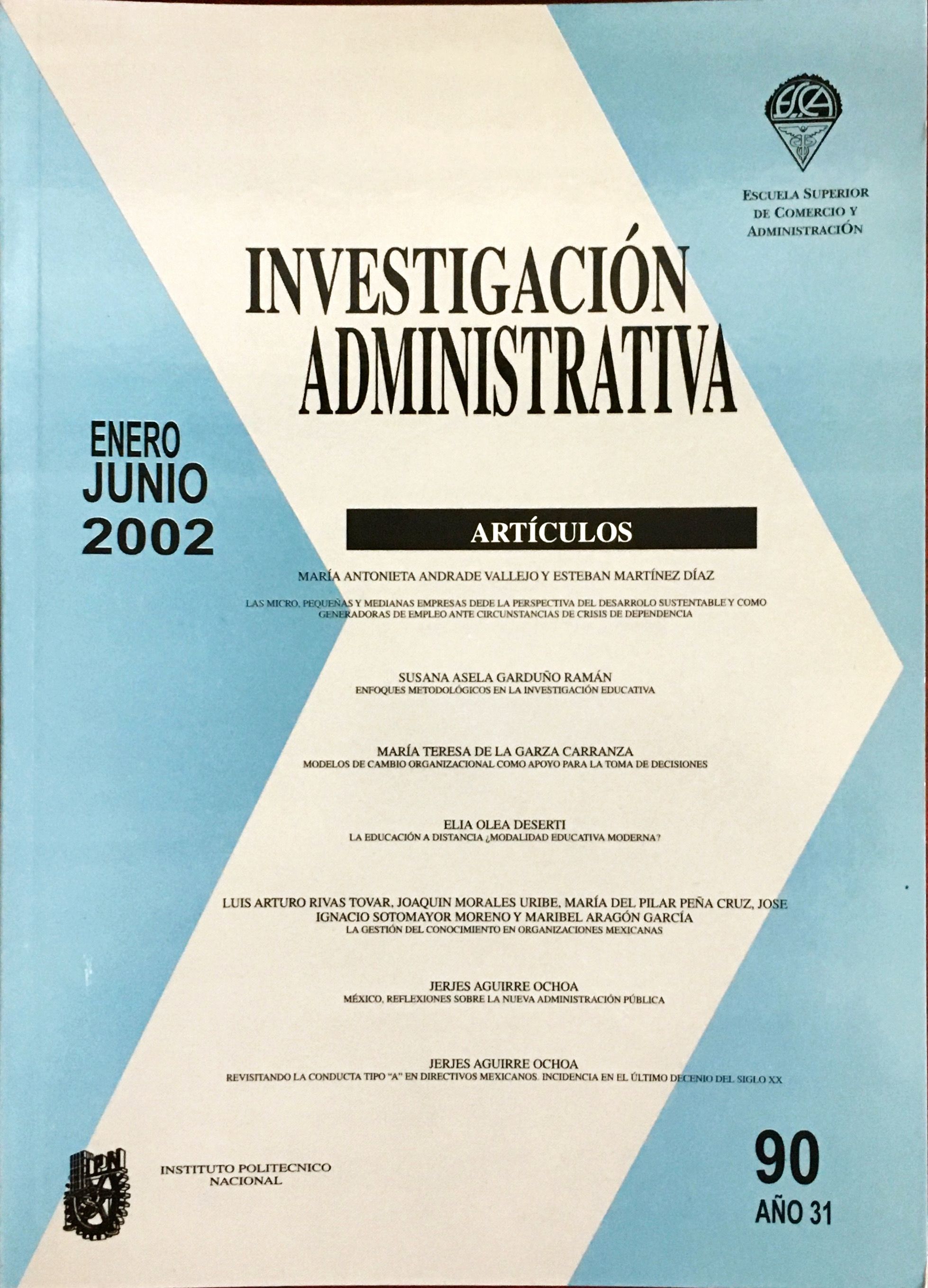La gestión del conocimiento en organizaciones mexicanas
Contenido principal del artículo
Resumen
Esta investigación descriptiva se realizó en una muestra de cincuenta y dos organizaciones mexicanas, entre ellas: diez universidades, veintiocho empresas privadas y catorce empresas e instituciones públicas. Como resultado de este trabajo, se concluye que la Gestión del Conocimiento como campo de vanguardia en México presenta una escasa evolución, debido no solo a barreras tecnológicas, sino también a aspectos culturales que clasifican la información, los datos y el conocimiento como algo poco conocido y compartido.
Detalles del artículo

Esta obra está bajo una licencia internacional Creative Commons Atribución-NoComercial 4.0.
Citas
Andersen Arthur. “La Gestión del Conocimiento en el Sector Sanitario: Reflexiones y Retos para Avanzar”. Asociación de Economía de la Salud, Madrid, 1999.
Bontis, N, Dragonetti, N.C., Jacobsen, K. and Roos, G. (1999) “The Knowledge Tool Box: A Review Of The Tools Available To Measure and Manage Intangible Resources”, European Management Journal, Vol. 17, No. 4, 391-402.
Choo, C.W. (1996) “The Knowing Organizations: How Organizations Use Information to Construct Meaning, Create Knowledge and Make Decisions, International Journal if Information Management”, Vol. 16, No. 5, pp. 329-340.
Davenport Thomas H., Harris Jeanne G., Kohli Ajay K., “How Do They Know Their Customer so Well?”, MIT Sloan Management Review, winter 2001
Davenport, T. H. (2001) Some Principles of Knowledge Management (Internet) Graduate School of Business, University of Teas at Austin, Available http://www.bus.utexas.edu/kman/kmprin.htm (Accessed 6 February 2001).
Demarast, M. (1997) “Undestanding Knowledge Management, Long Range Planning”, Vol. 30, No. 3, pp. 374-384.
Dixon, N.M, (1999) “The Changing Face of Knowledge, The Learning Organization”, Vol. 6, No. 5, pp. 212-216.
Drucker, P. (1988) “The Coming of the New Organizations”. Harvard Business Review. January-February 1988, Vol. 66, No. 1.
Galagan, P.A. (1997) “Smart Companies Training and Development”, Vol. 51 No. 12, pp 20-24
Gumble, H. (1988) Knowledge Management, Work Study, Vol. 47, Vol. 5. Num. pp 175-177
Jager, M. (1999) “The KMAT: Benchmarking Knowledge Management, Library Management”, Vol. 20, No. 7, pp. 367-372.
Joia, L.A. (2000). “Measuring Intangible Corporate Assets. Linking Business Strategy with Intellectual Capital”. Journal of Intellectual. Capital, Vol. 1, No. 1, pp. 68-84.
Jordan, J. Jones, P. (1997) “Assessing your Company´s Knowledge Management Style, Long Range Planning”, Vol. 30, No. 3, pp. 392-398.
Harris K., Fleming M., Hunter R, Rosser B., Cushman A, “The Knowledge Management Scenario: Trends and Directions for 1998-2003”, GartnerGroup, Strategic Analysis Report, 18 March 1999
Knowledge Management, Vol. 4, No. 3, pp. 217-223.
Rowley, J. (2000) Knowledge Organization for a New
Millennium: Principles and Processes, Journal of Rugles, R. (1988) “The State of Notion: Knowledge Management in Practice”, California Management Review, Spring, Vol. 40, No. 3 .
Toffler, A. (1990). “Powershift: Knowledge, Wealth and Violence at the Edge of the 21st Century”. Bantam Books.

